
This story originally appeared on NewRetirement.
They say that those who do not learn from history are doomed to repeat it. The bad news is that the last 50 years have seen five major financial, market or economic crises.
The good news is that each crisis has lessons that you can apply today to help you build more wealth and feel more secure about your future.
Each of the following crises left its mark on how people save and invest and provides lessons on protecting and building wealth even in troubled times.
Keep reading to see how people in previous generations managed in those times and what we can learn from them.
1970s financial crisis: stagflation
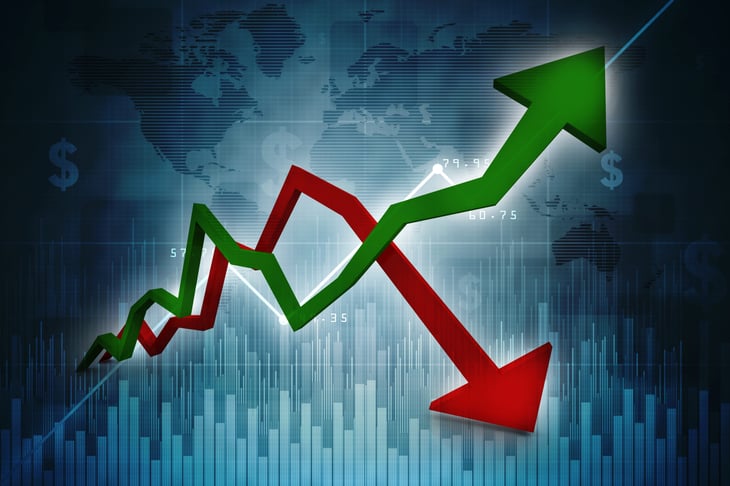
After World War II, the United States had the fastest-growing, most productive economy in the world. But several factors contributed to the economy’s decline into the 1970s and the economic malaise that came to be called “stagflation.”
Stagflation is a combination of conflicting economic factors — slow economic growth and high unemployment (typical of a weak economy) combined with rising prices (which more typically happen during good economic times).
Stagflation was a double whammy for the average person.
Inflation started to pick up in the U.S. at the end of the 1960s, in part because the government was pumping money into the economy to support the Vietnam War. Then, in 1973, the price of oil zoomed up after the Organization of Petroleum Exporting Countries (OPEC) levied an oil embargo on the U.S.
Because oil prices are passed on through most goods and services, the result was double-digit inflation. This came at a time of persistently high unemployment.
Stagflation lesson 1: Plan for the possibility of inflation
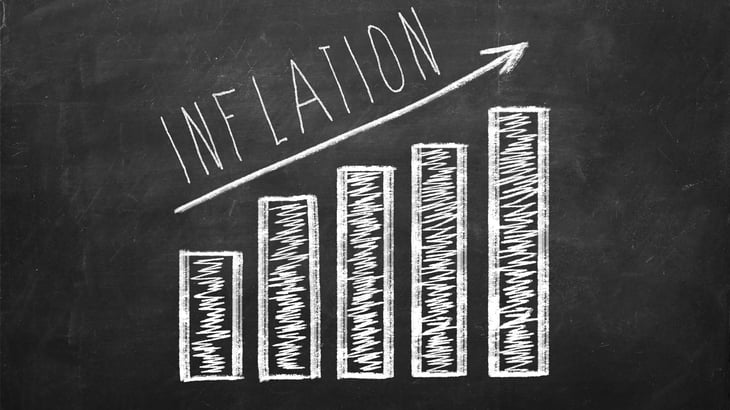
Stagflation reduced the buying power of every dollar people earned and saved, just like inflation does.
That is why just holding cash is not an adequate retirement strategy. You need your savings returns to keep pace — and preferably outpace — inflation in order to retain your buying power and quality of life.
Running scenarios for inflation against your long-term financial plans is really important.
While many economists think that we will continue to see low inflation (largely due to federal monetary policy), it is important to consider that over the last 40 years, inflation has ranged from a high of 14.8% in 1980 to a low of -2.1% in 2009.
Use the NewRetirement Planner to run scenarios and even get a Monte Carlo analysis (running more than 1,000 scenarios) to make sure your finances are prepared for any inflationary scenario.
Stagflation lesson 2: You are on your own to fund retirement

For most of the 20th century, employers offered loyal employees pensions for a lifetime of service.
Among the many changes in U.S. culture and society that took place from the mid-60s to the 2000s, employers stopped offering pensions and employees took the deal for plans like 401(k)s. That shift was accelerated by the stagflation’s drag on the economy.
As a result, you are now considered extremely lucky if you have a pension because pensions take a lot of the guesswork out of planning for future retirement security.
If you don’t have a pension, you are especially in need of a comprehensive retirement plan. You ideally save money, make good financial decisions and figure out how to turn your assets into income and make it last as long as you do.
Stagflation lesson 3: Diversify asset classes

You may be wary of being over-invested in the stock market, especially when it whipsaws from lows to highs and back again over a few months. However, in the 1970s many people were over-invested in bonds, and that was bad for their retirement.
During the stagflation crisis, real interest rates were extremely low. (The real interest rate is the nominal rate of return on a bond minus the value lost to inflation.)
This made returns on government bonds — a staple of an average retiree’s wealth at the time as well as the backbone of most company-sponsored pensions — incapable of protecting retirees’ buying power.
When you are retired, you need to be appropriately diversified. Appropriate investments in both stocks and bonds — as well as other asset classes — can reduce the risk that any one investment tanks your portfolio.
The stock market crash of 1987

On Monday, Oct.19, 1987, stock markets around the world experienced a sudden unexplained drop in prices.
The Dow Jones Industrial Average (DJIA) fell nearly 23%, which is nearly twice the percentage drop of the next biggest crash — that of March 16, 2020, caused by the coronavirus pandemic.
Though many culprits were blamed for the crash, none have been definitively proven to be the cause.
The U.S. Federal Reserve Bank under Alan Greenspan vowed to be the lender of last resort to make sure the stock market crash didn’t become a financial crisis, and a big change was made to government regulations that allowed exchanges to temporarily halt panic selling.
1987 crash lesson 1: Don’t sell, sit tight!

Lots of people lost lots of money on Oct. 19, 1987, “Black Monday.”
Spooked by the market crash, people rushed to sell stocks, trying to stem their losses, making the markets fall farther and faster. It turns out that with the panic selling, they were making a big mistake — selling at a loss.
During a crash, you do not want to react quickly and emotionally. You want to sit tight and wait for the recovery. Don’t sell at a loss because the real lesson from history is that markets have always recovered.
Five years after the 1987 crash, a person who was invested in an S&P 500 index fund would have seen their portfolio nearly double. And that portfolio today (assuming only asset growth and no addition from dividends) would be worth 14 times more today than it was then.
Don’t sell, sit tight!
1987 crash lesson 2: You can’t time the market, so don’t try

No one predicted the ’87 crash, and people still aren’t exactly sure why it happened. This highlights the point that you can’t predict when to ideally buy and sell.
Have a long-term plan and stick to it no matter what the market happens to be doing on any given day, month or year.
Consider creating an investment policy statement to help you make good rational decisions about investments.
1987 crash lesson 3: If you have extra cash, a downturn could be a time to buy

Warren Buffett, the most famous investor on the planet, said, “When other people are greedy, be fearful. When other people are fearful, be greedy.”
Prices are low in a downturn. It is often a time to buy, not sell.
1990s financial crisis: the dot-com bubble

Growth in the stock market eventually led to what Fed Chairman Alan Greenspan notoriously called “irrational exuberance.” By the end of the 1990s, companies were adding “dot-com” to their names just to increase their share prices.
Then in March of 2000, the Nasdaq Composite index that tracks the technology-heavy exchange started a decline that didn’t end until October 2002.
Dot-com crash lesson 1: Day trading is fun, but not often productive

The internet not only created companies that people wanted to invest in, but it also created online brokers that allowed more people to trade in stocks. Online brokerages like E-TRADE made it seem like you could bet on your favorite companies, and in 1999 everyone was a winner.
This allowed many investors to be speculators and left some people exposed to individual companies that they may or may not have known very much about.
Research indicates that even seasoned investment analysts can’t do better than the returns on an index fund over the long haul. Day trading might be fun, but it isn’t the surest way to build wealth.
Dot-com crash lesson 2: You don’t have to follow the trends
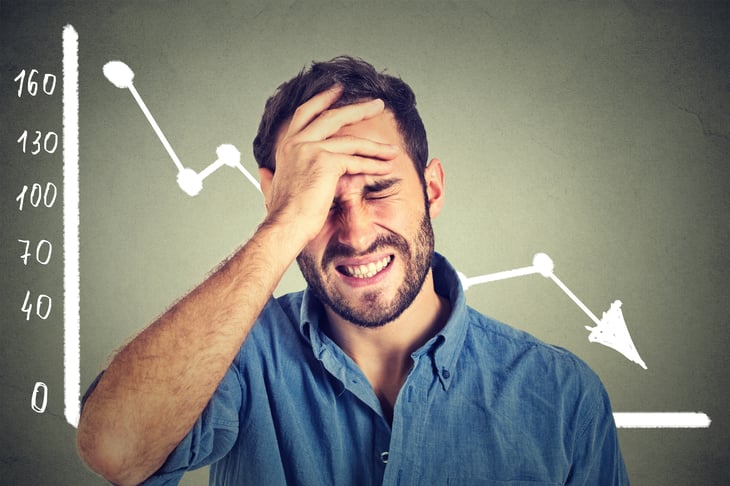
The dot-com bubble was caused by an over-investment in technology companies. Everyone wanted to own Netscape, Yahoo, Ask Jeeves and a host of other dot-com entities.
(Don’t recognize a couple of those companies? Yep! Two of those three failed miserably along with many others.)
But, you know what? If you were an investor who was not trying to buy into the dot-com craze and was diversified in other industries, you probably took only a small hit in this crash. And, you were well-recovered within a year.
Diversifying holdings across a variety of sectors and companies is almost always a good idea.
Dot-com crash lesson 3: Fundamentals count for something

A lot of companies that saw huge valuations during the dot-com bubble were without a business model. They did not have a solid, defensible plan for making money.
It sounds crazy, but it is true. When you are investing in a company, you ideally know something about what that company does and how it will grow your money.
Know what you are investing in and buy quality.
The 2000s housing bubble

From 2002 to 2008, house prices zoomed upward until people thought the return on the equity in their homes would rise forever.
That bubble burst when the subprime mortgage market in the U.S. failed and caused a cascade of bankruptcies that threatened to take down the global financial system.
Home prices fell dramatically and didn’t recover for a decade.
Housing bubble lesson 1: Your home is not always a financial fortress

Owning a home is one of the smartest financial decisions you will make, in most cases.
However, when the housing bubble burst, many people lost their homes to foreclosure or walked away from underwater mortgages.
Homeownership among 55- to 64-year-olds fell from 82% in 2004 to 75% in 2017.
Interestingly, however, people who were already retired felt almost no effect on their rate of homeownership.
That might be because in 2008, people who were born before 1943 had paid off their mortgages by the time the housing bubble burst.
Housing bubble lesson 2: Be wary of easy credit

If credit is too easy in a market, then it will cause asset prices to be overly high.
Because almost anyone and everyone could get access to credit — a mortgage — it inflated housing prices beyond rational values.
Housing bubble lesson 3: Don’t own too much house

Many people got in trouble in the housing bubble because they borrowed too much money to buy a home that was more expensive than they could reasonably afford.
Experts suggest that your monthly housing costs — mortgage payment (or rent), property taxes and homeowners insurance — should not exceed 30% of your take-home pay.
Housing bubble lesson 4: Bubbles are human nature, protect yourself with a plan

The housing bubble was the second bubble crisis in 10 years, and it won’t be our last. Bubbles, you see, are a clear result of human nature.
As Warren Buffet explains, “People start being interested in something because it’s going up, not because they understand it or anything else. But the guy next door, who they know is dumber than they are, is getting rich and they aren’t. And their spouse is saying can’t you figure it out, too? It is so contagious. So that’s a permanent part of the system.”
So, how do you protect yourself from bubbles? The most important thing you can do is to understand your goals, your risks, and have a long-term, defensible plan.
Housing bubble lesson 5: Your home is a valuable asset

The housing bubble brought attention to the fact that housing is often your most valuable asset and usually a stable one.
It is also an asset that can be used to help fund retirement. Use the NewRetirement Planner to explore ways to use home equity as part of your overall retirement plan.
The Great Recession
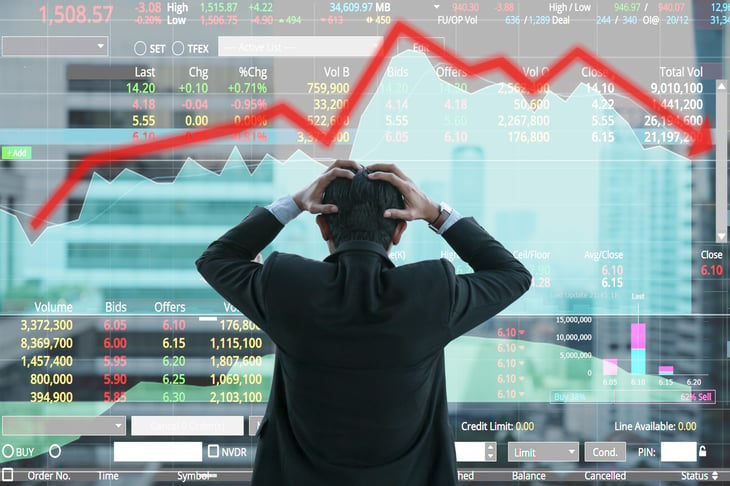
The bursting of the housing bubble was followed rapidly by the Great Recession, starting in 2008.
From May 2008 to March 2009, the value of the S&P 500 got cut in half.
The Great Recession had a materially negative impact on people who were nearing retirement. Research shows that the Great Recession delayed retirement for those who didn’t lose their jobs, and those who did lose their jobs likely tapped retirement savings to cover the shock to their budgets.
Great Recession lesson 1: You can probably make things work

For people close to retirement age, this was a difficult time, but according to the Employee Benefit Research Institute, people in those difficult circumstances tend to cut back their spending and rely on Social Security, annuity and pension income rather than sell investments at a loss and spend down their savings.
Not sure you could bridge a stock market downturn? Perhaps you could turn to emergency money.
Great Recession lesson 2: Diversify investments for short- and long-term needs
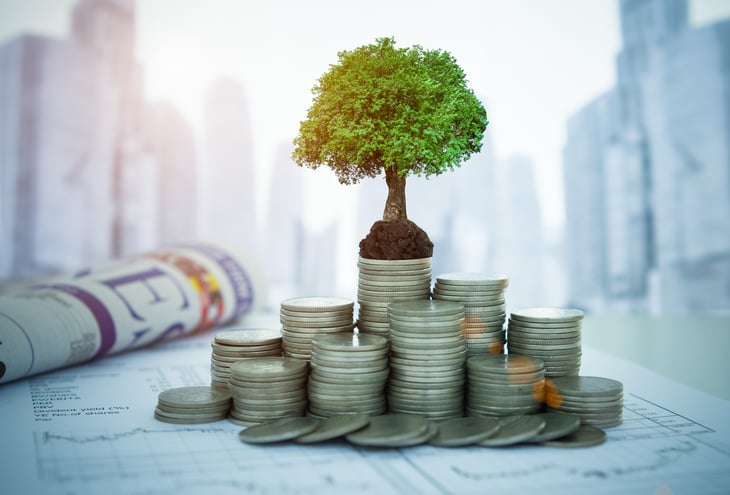
You need to be invested. You need some money invested in the stock market in order to outpace inflation.
However, you don’t need all of your money invested in the stock market.
The real trick to being able to weather a recession is to keep money you need in the short term in cash, and money that you won’t tap till later can be in riskier investment vehicles like stocks and funds.
Explore a retirement bucket strategy for your short- and long-term financial needs.
Great Recession lesson 3: Invest passively

Passive investing is the strategy of buying and holding investments for long periods of time — rather than buying and selling frequently to try to beat the market.
Passive investing is the right strategy for most of us for longer-term money needs.
Great Recession lesson 4: Be wary of the next bubble and financial speculation

There will always be another bubble. And speculation seems to be part of who we are.
The growth that bubbles and speculation fuel can actually be great.
Today, trading on Robinhood is all the rage, and cryptocurrencies like bitcoin continually repeat a boom-and-bust cycle.
The stock market is doing well despite the extreme financial distress in many American households.
Keep an eye out! The next bubble is always floating around!
Great Recession lesson 5: Think retirement income, not investment returns

When you retire, investment returns are still a factor, but the more important concern may be how to turn your assets into reliable income.






Add a Comment
Our Policy: We welcome relevant and respectful comments in order to foster healthy and informative discussions. All other comments may be removed. Comments with links are automatically held for moderation.